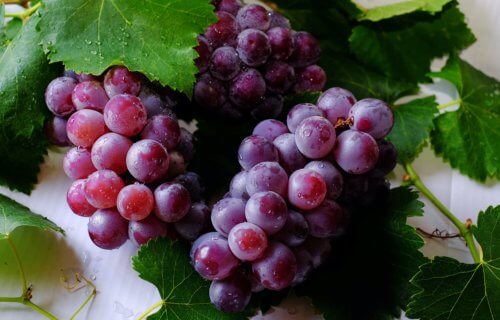ITHACA, N.Y. — Talk to any serious wine drinker and they can probably tell you which vineyard they prefer to get their bottles from. When it comes to smaller grape farms in harder-to-grow areas however, how much supply will be available can be a bit of a mystery. Now, engineers and plant scientists from Cornell University are developing a way to solve that question. The team has created a low-cost app which can help grape growers to accurately predict their yields months before their product ripens.
Using a smartphone to record each grape vine, vineyard workers would only have to drive or walk through their crops at night to gather the necessary data. Growers can then upload the video to a server which processes the information for them. Researchers say this system uses computer-vision to improve vineyard yield estimates, which humans aren’t so great at doing.
Traditional counting methods involve workers going through grape clusters by hand. These employees also only count a small subset of the entire vineyard and then scale the numbers up. Despite being a tedious and costly process, these counts generally have an error rate of up to 24 percent. The Cornell team believes their new app would cut that number in half.
“This could be a real game-changer for small and medium-sized farms in the Northeast,” says Kirstin Petersen, assistant professor of electrical and computer engineering in the College of Engineering, in a university release.
Every grape counts
Study authors say the biggest difference in their app’s predicting system is it counts every single vine the same way. When a worker counts grapes, the accuracy always depends on the counter. In an experiment featuring four vines with 320 clusters, researchers discovered hand counts ranged from just 237 to 309.
In real vineyards, workers would then get an average of the clusters in a few rows and let the farmers multiply those numbers by the total rows at the vineyard. When people miscount the grapes however, multiplying that number just makes the bad count even worse — leading to bad predictions.
The new app, instead, records each vine on the property before making its estimate. Even though the computer’s counting system isn’t perfect, closer numbers will lead to better predictions when wine season comes back around.
“We showed that compared to the technology, a farmer would have to manually count 70% of their vineyard to gain the same level of confidence in their yield prediction,” Petersen explains, “and no one would do that.”
Better predictions leads to better business
Moreover, the team says the app even has a leg-up on expensive robot counters small and medium-sized growers likely can’t afford. While robots do their counting late in the season (September and October), the new app can begin making accurate counts starting in May.
“Having good predictions earlier in the season gives farmers more time to act on information,” first author Jonathan Jaramillo says.
With this information, farmers will be able to line up buyers and account for harvesting and wine-making costs long in advance.
“Not having these things lined up in advance can cause problems for growers last minute and ultimately reduce profits,” Jaramillo adds.
Study authors plan to field test their app this summer.
The team’s findings appear in the journal Frontiers in Agronomy.
